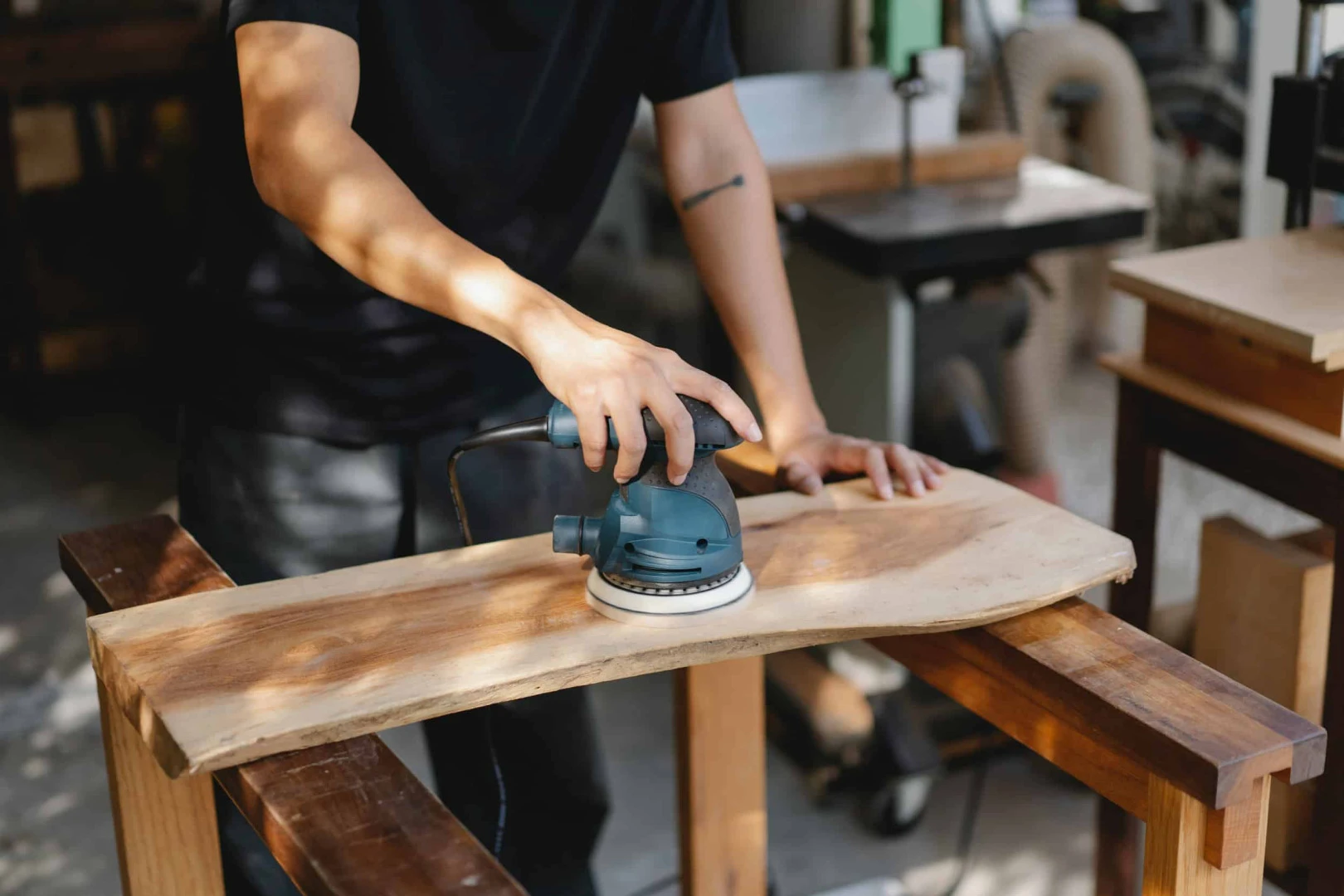Sanding and polishing processes in furniture production are critical for enhancing product quality and achieving an aesthetically pleasing finish. These two stages ensure that furniture surfaces are smooth, glossy, and flawless. Sanding removes rough spots, scratches, and other imperfections, preparing the material for subsequent treatments. Polishing follows sanding, imparting a final shine to maximize the surface’s visual appeal. Achieving strong coordination between these processes is essential for excellent results. Using proper techniques and materials during both sanding and polishing maximizes their effectiveness, resulting in higher craftsmanship quality and a visually striking final product. In furniture production, harmonizing sanding and polishing is fundamental to creating durable, high-quality pieces.
The Importance of Sanding in Furniture Production
Sanding plays a crucial role in furniture production. It is the primary procedure for achieving smooth surfaces, removing natural imperfections, cracks, and scratches in materials such as wood, MDF, and particleboard. Proper sanding ensures better adhesion and more aesthetic results in subsequent processes like painting or finishing. Sanding also cleans residual dirt and oils, improving the workability of the material. Using correct techniques, selecting suitable equipment, and choosing appropriate sandpaper grit directly influence product quality. Therefore, sanding is an indispensable step in furniture production.
Choosing the Right Sandpaper Grit
Selecting the proper sandpaper grit is essential for effective sanding. The grit size determines the abrasive particle size and density, which influences the surface outcome. Coarse grits remove more material and are ideal for initial stages, while fine grits are used for final smoothing to achieve a polished surface. In furniture production, different grit sandpapers are applied at various stages: for instance, 60-80 grit for the initial sanding and 180-240 grit for finishing. Correct grit selection also enhances the coordination between sanding and polishing, making the polishing stage more efficient and successful.
Importance of Pre-Polish Sanding
Pre-polish sanding is a critical step in achieving high-quality results. Sanding eliminates surface imperfections and minimizes roughness, allowing the polishing process to be more effective. Insufficient sanding limits the polishing effect to merely concealing defects, preventing the desired aesthetic outcome. Using appropriate techniques and materials for different areas of the surface ensures a smoother workflow and a more successful polishing process. Thorough pre-polish sanding is key to achieving flawless furniture surfaces.
Polishing Process on Furniture Surfaces
The polishing stage follows sanding and gives furniture surfaces their final shine. The process begins by enhancing the smooth surface obtained through sanding, using specialized polishing materials and equipment. Polishing pads, such as lambswool polishing pads, are particularly effective in adding brilliance and removing fine residues. Polishing should be performed with even, controlled movements for a consistent finish, avoiding excessive pressure. This stage is crucial both aesthetically and functionally, contributing to the durability of the furniture.
Key Considerations for Sanding and Polishing Harmony
Achieving harmony between sanding and polishing is essential for high-quality furniture surfaces. Key considerations include:
Employing correct sanding techniques and using appropriate materials.
Selecting sandpaper grit that complements the polishing process.
Using polishing materials suitable for the type of surface.
Planning the transition between sanding and polishing carefully.
Utilizing high-quality, professional-grade equipment for both processes.
Proper coordination ensures that both sanding and polishing complement each other, resulting in flawless and visually appealing furniture.
The Power of Sanding and Polishing Harmony for Flawless Surfaces
In furniture production, the harmony between sanding and polishing is one of the most important factors in achieving perfect surfaces. Sanding removes imperfections and reveals the natural texture of the material, while polishing enhances the smooth surface with a final shine, maximizing aesthetic appeal. Using the right materials and techniques ensures these processes complement each other. This synergy not only delivers aesthetic excellence but also improves functional durability. Meticulous sanding and polishing create long-lasting, high-quality furniture with enhanced user satisfaction.



